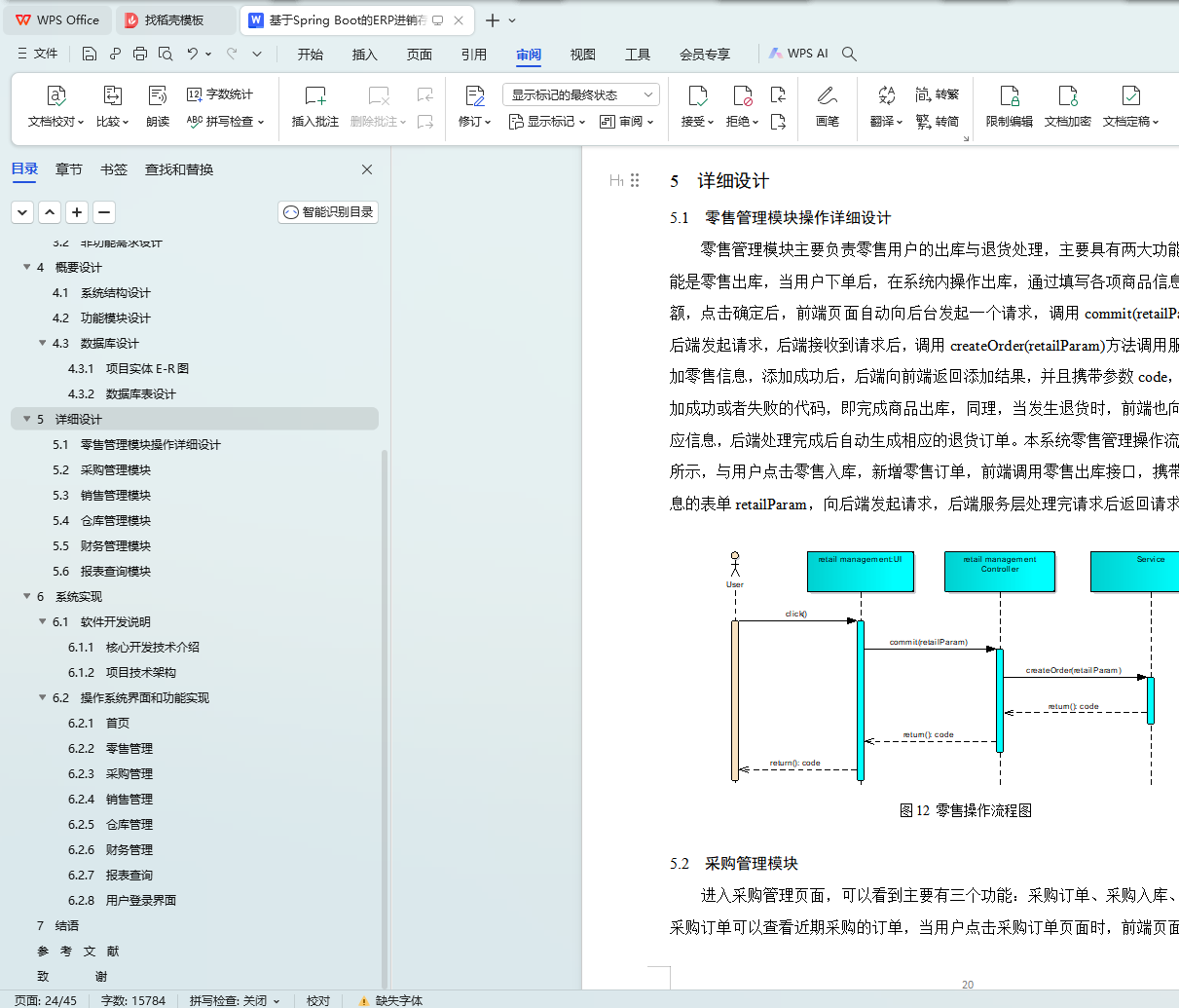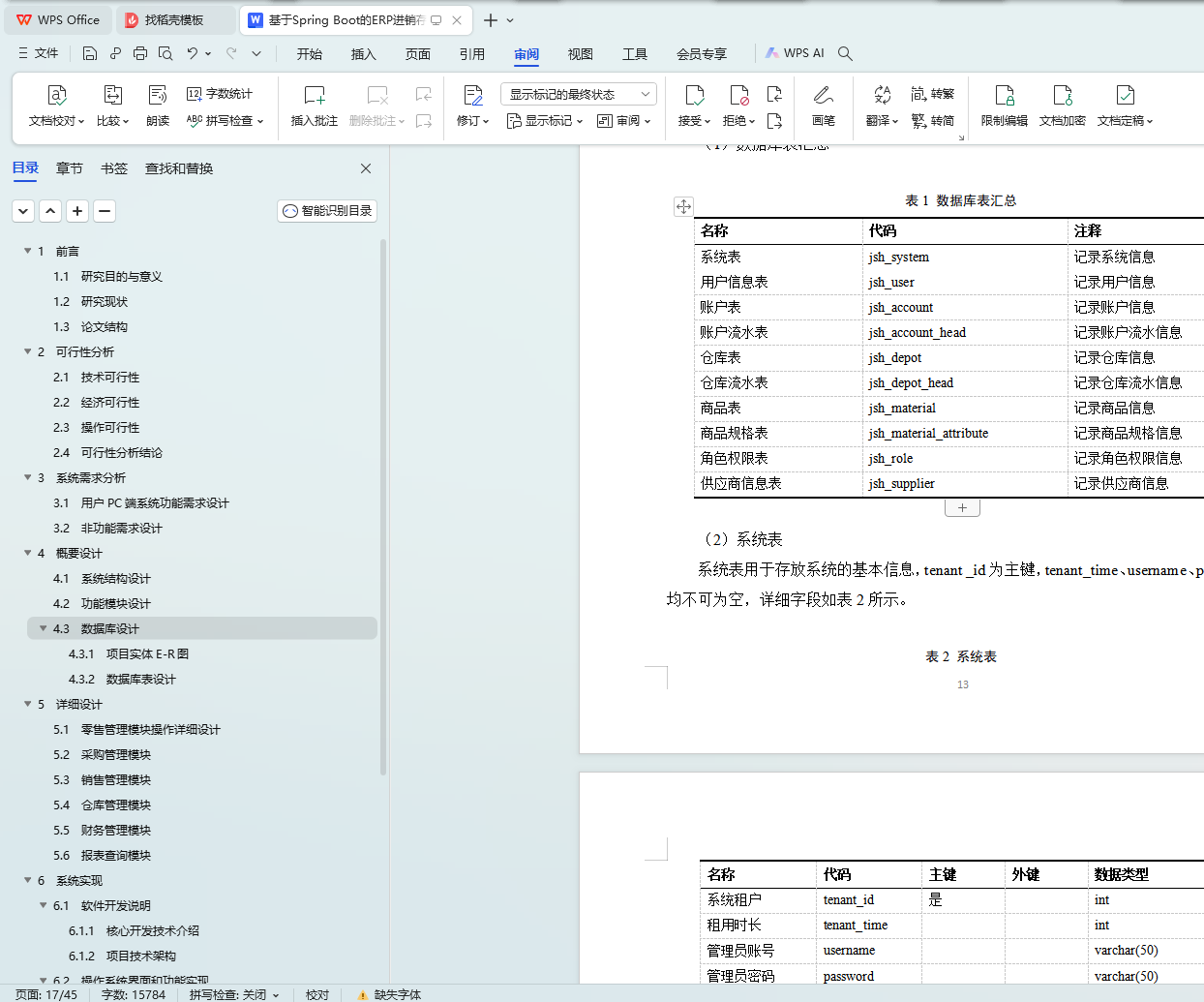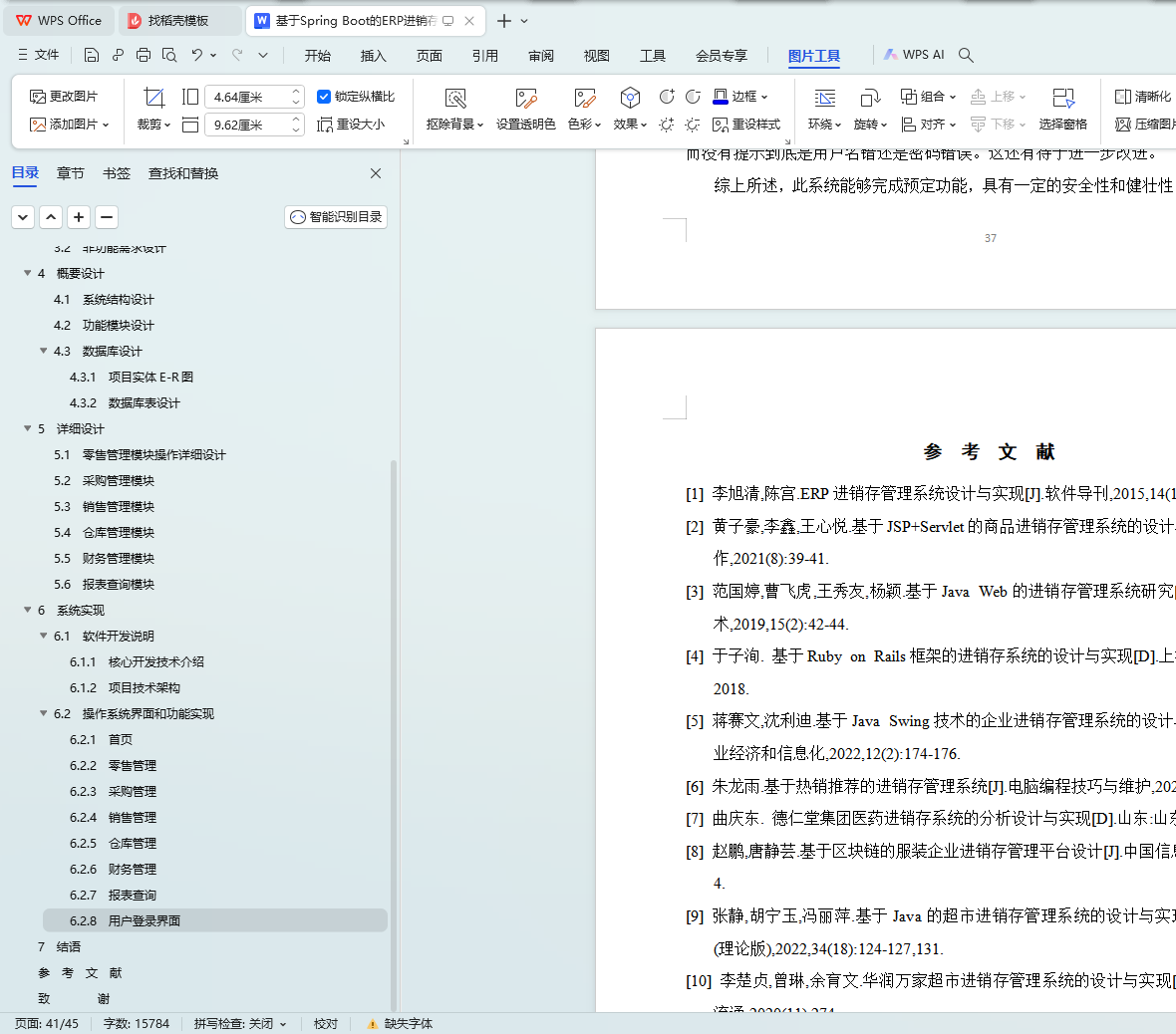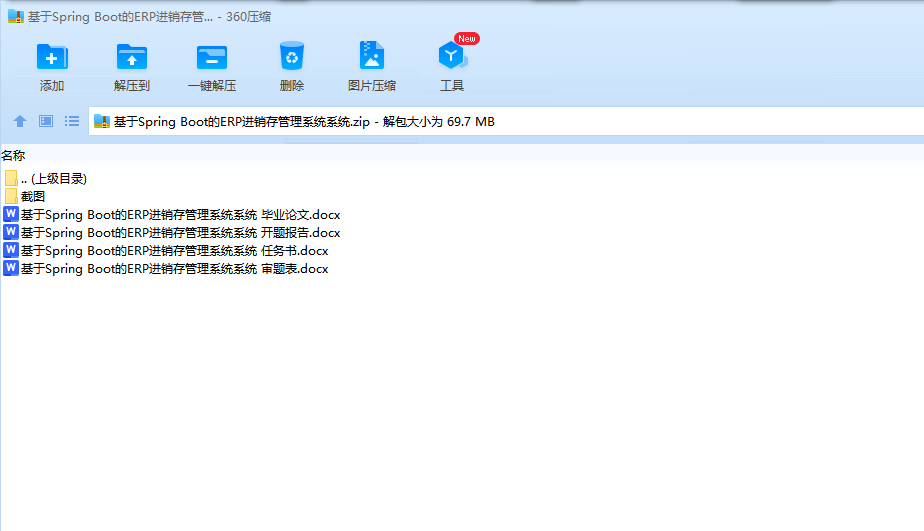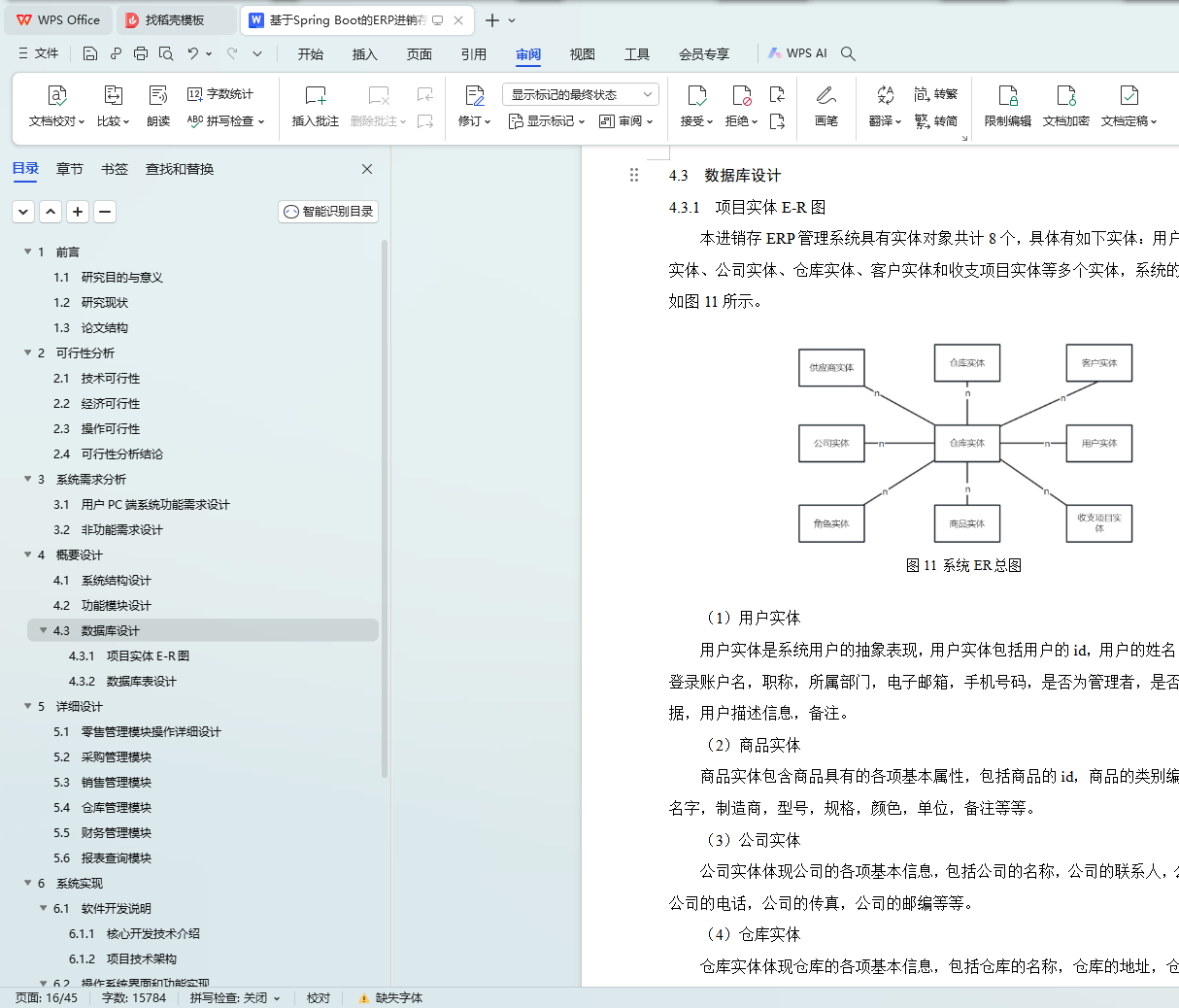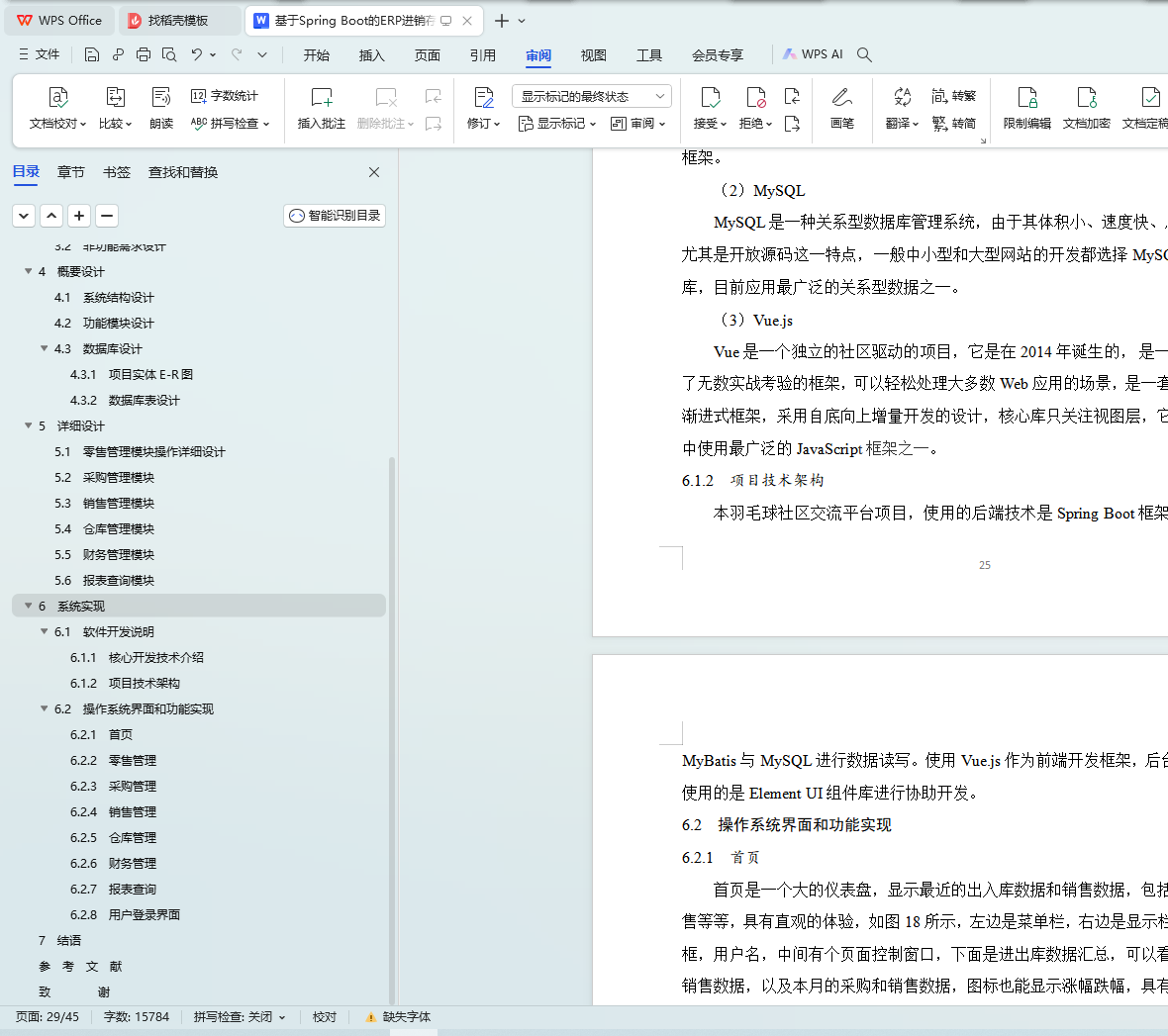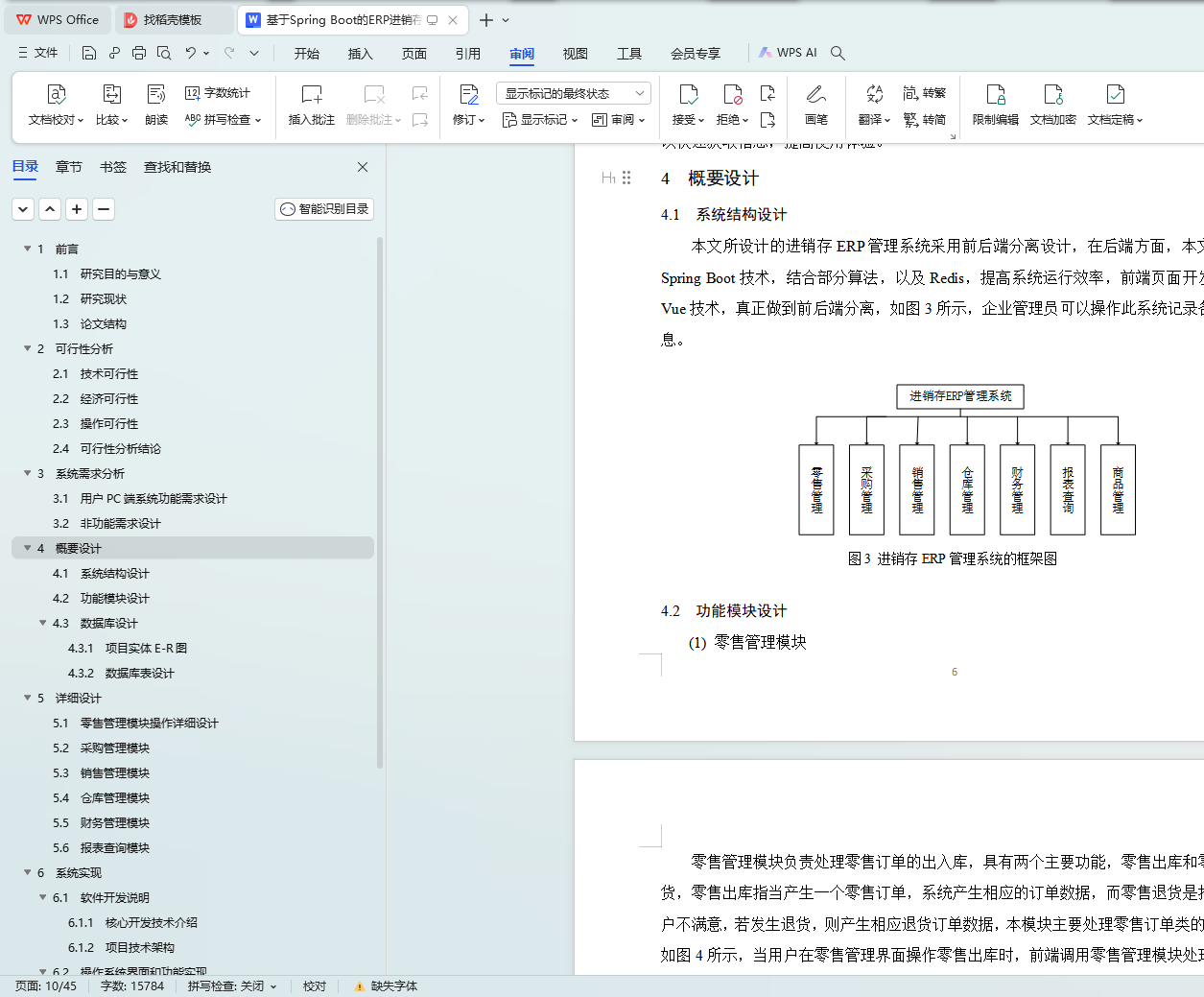基于Spring Boot的ERP进销存管理系统系统 毕业论文+选题表+任务书+开题报告
摘 要
目前国内的很多经销商都不是只做单一商品的买卖,经常会有多种商品,而如何记录商品的销售情况和库存,显然是一件值得考究的事情,传统的传统手写记账的效率太低,且容易发生错账,因此,进销存ERP系统的诞生即可解决目前存在的大部分问题,并且具有可追溯,可对账功能,提高企业运行效率,减少出错等情况。本文拟开发一个高效全面的进销存ERP管理系统,拟采用Spring Boot技术,搭配主流前端框架Vue,数据库方面使用MySQL,并配合Redis提高查询效率,在某些模块采用算法优化提高系统工作效率,前后端分离,具备的基础功能有,零售管理,采购管理,销售管理,仓库管理,财务管理,报表查询,商品管理等等。可以在系统内进行入库,出库,以及对账等等,对于库存的进出有日志记录,方便回溯,同时对于敏感操作,具有审核功能,对于误审核订单,也可以进行反审核。
关键词:进销存ERP管理系统;Java EE;Spring Boot;MySQL;Redis
Abstract
At present, many domestic traders not only buy and sell a single product, but often have several products. How to record sales and inventory of products is undoubtedly a question worth exploring. The efficiency of traditional handwritten accounting is too low, and mistakes can be easily made. Therefore, adopting an ERP system for inventory can solve most of the current problems and has traceability and reconciliation functions, improving the efficiency of enterprise operation and reducing errors and other situations. This paper aims to develop an efficient and comprehensive ERP management system for procurement, distribution and inventory. The system was developed using Spring Boot technology in combination with the mainstream front-end framework Vue, uses MySQL as a database, and works with Redis to improve query efficiency. Algorithm optimization will be used in some modules to improve system efficiency, separating front-end from back-end. Basic functions include retail management, procurement management, sales management, inventory management, financial management and report query, product management, etc. It can be used for inbound, outbound and reconciliation within the system. There is a log of inventory receipts and issues, which is convenient for traceability. At the same time, it has a verification function for sensitive operations. For orders that have been incorrectly approved, the approval can also be reversed.
Keywords: ERP;Java EE;Spring Boot;MySQL;Redis
目 录
